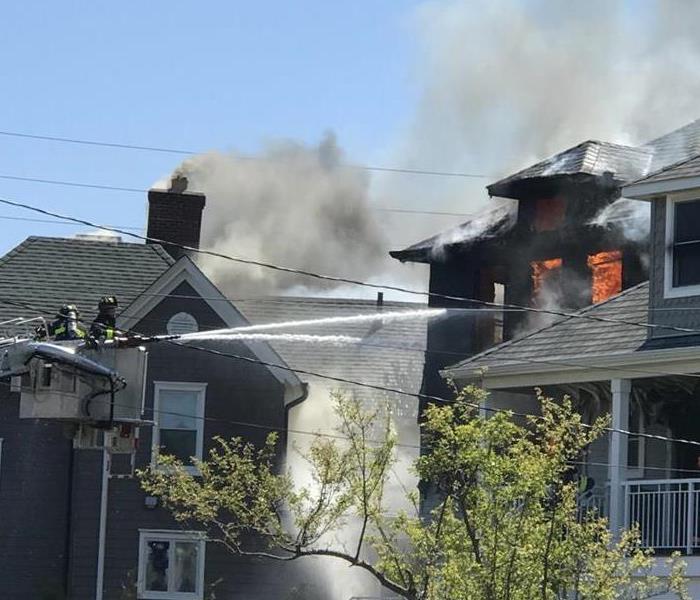Proper Soot Remediation
1/21/2021 (Permalink)
The possible health effects of a fire can last long after the flames are extinguished. In fact, decontamination of soot and environmental exposures is the “hottest” topic in the fire service today. The nasty chemicals caused by fire can linger for long periods of time on surfaces and in belongings. Make sure these items are professionally cleaned.
Soot is made of tiny particles created by incomplete combustion, technically called pyrolysis. (Fun fact: solids and liquids can’t burn. Heat at the surface of these materials is converting them to gasses which burn.) Even the basic wood used in framing (Douglas Fur) causes 75 different chemicals including poisons such as hydrogen cyanide and phosgene. These particles linger in the form of soot leaving a dangerous smelly mess.
During a fire, soot spreads to the whole house, attaching to surfaces. The acidic properties of soot can further damage your home and indoor air quality if the soot is not removed immediately.
Soot can inhabit your home even without a fire. Candles can lead to soot buildup, fireplaces can release soot as well if not ventilated properly, and furnaces are also a source of soot contamination when they produce a puff back (reference our blog on puff backs at What is a Puff Back?)
To avoid the health risks of soot exposure after a home fire, make sure that all soot-affected areas are properly cleaned and sanitized.
When cleaning soot, wearing safety equipment to protect the lungs, skin, and eyes is essential in reducing soot exposure. Specialized techniques such as air scrubbing are also needed to restore indoor air quality following a fire.
A dust mask and a household cleaner are not enough to clean up soot! Removing soot requires professional tools, knowledge, and expertise. Certified experts at SERVPRO can properly clean soot and odors from your entire home to ensure it is safe to inhabit.
If you are concerned about these exposures in your home, call us today for a consultation at 201-330-4193.





 24/7 Emergency Service
24/7 Emergency Service
